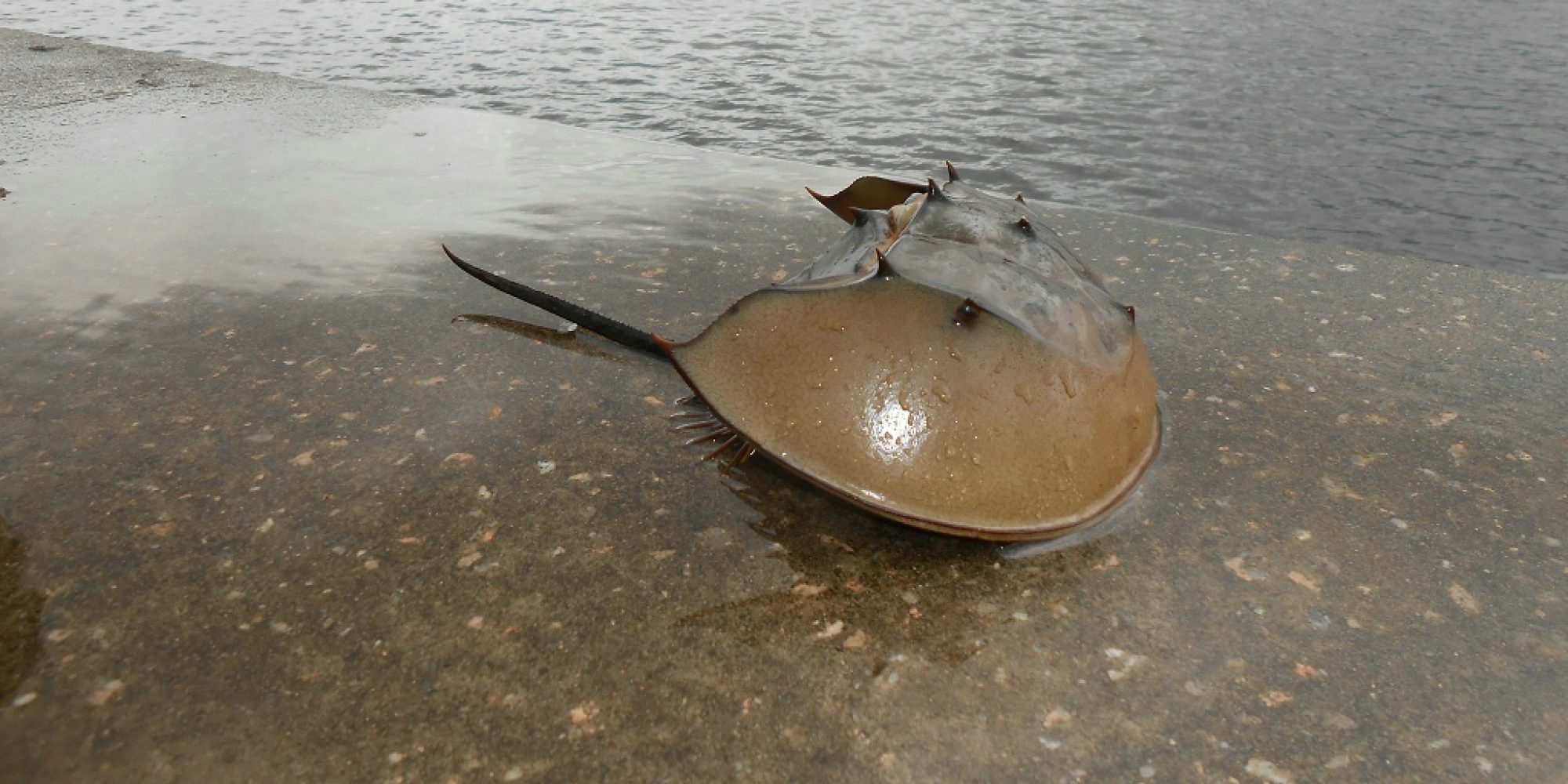Horseshoe crabs have few natural predators and are only preyed by sharks and sea turtles which are uncommon in Hong Kong. The major threats to horseshoe crab are anthropogenic activities including destruction of coastline for development, pollution, and harvest for human use.
Coastal development and habitat loss
Natural mudflat is an essential area for horseshoe crab spawning and a habitat for juvenile horseshoe crab. Development along the shoreline is degradative to the survival and reproduction of horseshoe crab.
For example, a place called Hau Tei Square (“Hau” means horseshoe crab in Chinese) in Tsuen Wan district was once a natural shoreline where horseshoe crabs used to reside. Unfortunately, Tsuen Wan was designated to be developed as a new town in the 1960s. Land reclamation in the area led to the destruction of natural mudflat which are the spawning and foraging grounds for horseshoe crab.
Encroachment to the habitat of horseshoe crabs is further enhanced by recreational activities on beaches. In Shui Hau, one of the few remaining horseshoe crab habitats in Hong Kong, clam digging has become popular recently causing huge disturbance to the local ecology.
Pollution
Horseshoe crabs in Hong Kong are affected by water pollution such as residuals of herbicides and heavy metal.
Occasionally, they are being entangled and killed by ghost fishing nets or gears abandoned on the sea bottom or debris on the beach.
An emerging pollution problem is microplastic. Microplastics are very small pieces of plastic including microfibers from clothing (e.g. nylon), foams, microbeads and plastic pellets. Ingestion of microplastic has been reported for marine invertebrates such as filter feeders like mussel, deposit feeders like lugworm and detritivores like shrimps. It is believed that microplastic can hamper the reproductive ability of horseshoe crabs, as well as causing inflammation and lowering growth rate. To know more, visit “Shui Hau Magnification” (https://www.facebook.com/shuihaumagnification/).
Harvest for human consumption
Horseshoe crab is captured in mainland China and Southeast Asia for human consumption. Their flesh and appendages are used for soup making and their roe is eaten directly or as salad.
Harvest for biomedical use
Horseshoe crabs are bled for extracting their blue blood to make amebocyte lysate. A 2010 study reported that the capture and bleed procedure may cause up to 30% mortality after the horseshoe crabs are released. Though not happening in Hong Kong, they are being harvested in the US and Asian countries. They are protected by local laws in the US, China and Japan, but there is no regulations in Southeast Asia countries such as Vietnam and Malaysia.

